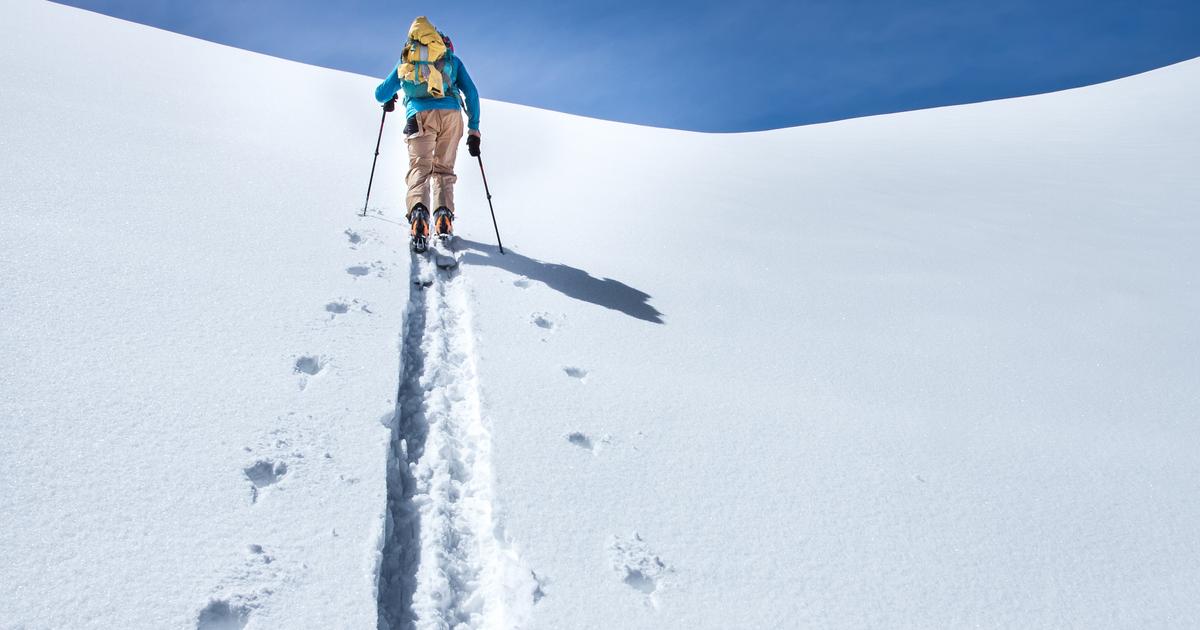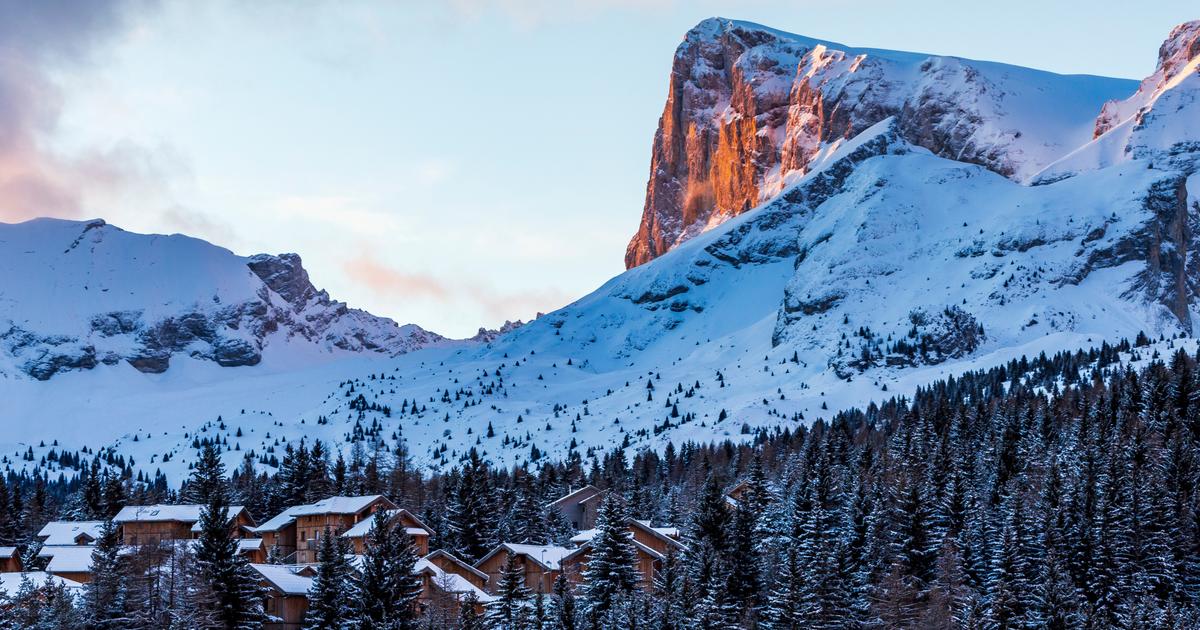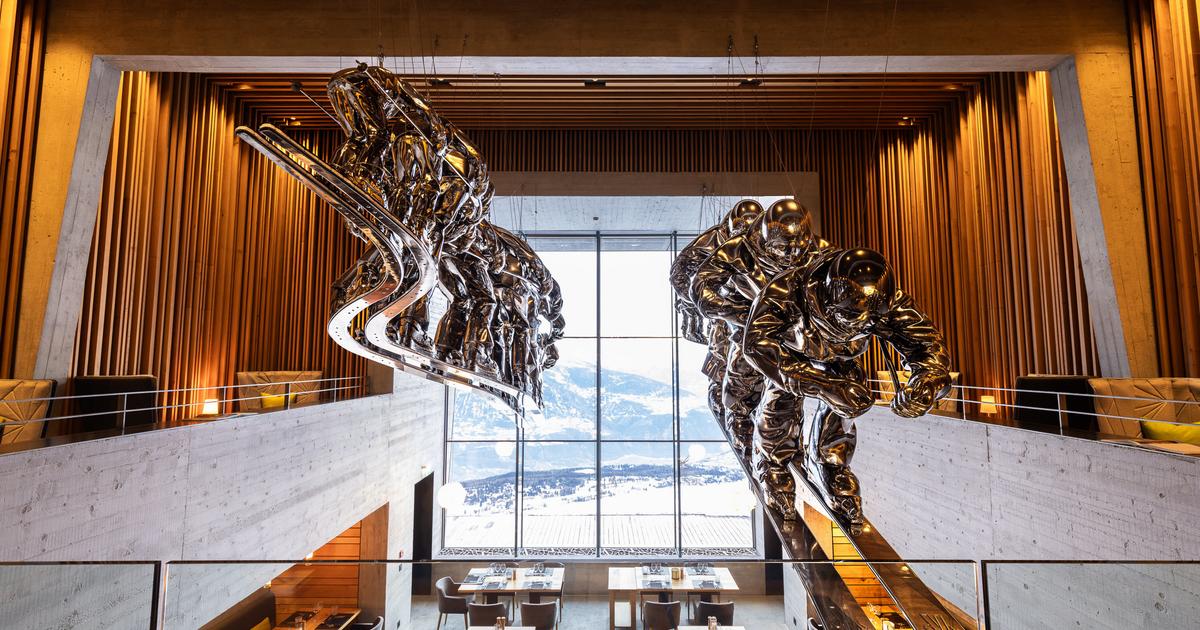What is ski touring
?
At the origins of skiing, a distant heritage of Scandinavian hunter-gatherers, ski touring allows you to move with the strength of your calves and away from the ski lifts in the snowy mountains.
Thanks to specific bindings and a now synthetic version of “sealskins” glued under the skis, the hiker goes up the slope by lifting his heel and without sliding backwards.
Once at the top, he removes the skins and fixes his heel for a descent then identical to alpine skiing, but in unprepared snow.
Faced with the rise of this practice, more and more ski areas are offering accessible and safe itineraries just a stone's throw from the slopes, which allow you to learn, to perfect your technique and your "cardio" on the ascent while descending through groomed trails.
A great option before escaping completely (accompanied by a guide or an instructor) on wilder routes!
Read alsoWhere to ski tour in the Alps?
Our selection of resorts
What level of skiing is required for ski touring?
Ski touring in the Massif des Écrins.
Michel Morere - S. Roth.
Lands of Adventure
If an initiation is essential, especially to handle the equipment, it is however not necessary to be an expert skier to practice ski touring on marked trails.
The ascent is carried out on the same basis as the walk;
and the descent, since it takes place on the ski slopes, therefore requires the same level as an alpine skier capable of descending a groomed blue run, i.e. an intermediate level (called Class 2 by the ESF).
The art of fixing "sealskins".
Dynastar
On the other hand, the "real" ski touring, that is to say outside the marked trails, requires a higher technical level of skiing, associated with good physical condition.
The guides and instructors do not fail to ensure your ability to ski in powder or ungroomed snow before organizing any outings outside the ski areas.
Read alsoCourchevel ski touring version, far from the bling-bling
What are the advantages of ski touring?
Ski touring offers a contemplative dimension, it allows you to dive into the natural mountain environment and admire the beauty of the landscape, far from the frenzy sometimes felt on the slopes.
This practice is also very popular with endurance athletes, such as running or trail running: some practice it as a “fitness” activity, with maximum intensity on the way up!
Read alsoCross-country skiing: our 10 favorite resorts in France
Last but not least, with regard to practice outside the ski areas, as Sylvain Tesson puts it so well:
“ski touring is synonymous with total freedom”
.
Indeed, in our current societies there are few practices that allow us to evolve in a natural environment like this, preserved from the human presence, its rules and its prohibitions.
The law is that of nature, and the necessary and far from trivial decisions concern only those who take them.
Evolving in the mountains thus brings a feeling of independence and pure freedom, certainly similar to those experienced by sailors and yachtsmen during their outings at sea.
Read alsoWhere to go ski touring in the Pyrenees?
from Font-Romeu to Hautacam, our selection of itineraries
Where and with whom to start ski touring?
Night ski touring on one of the Avoriaz itineraries.
Loic Bouchet
Sticking on and taking off your skins, putting your bindings in the up then down position, adjusting your boots... Handling can seem a little complex at the start and needs to be explained on the ground, even to good skiers!
Guide companies and ski schools everywhere now offer group initiations or private lessons for a day or a week.
In addition, each winter, more and more resorts set up dedicated initiations: this is the case in Arêches-Beaufort (Savoie), temple of "sealskin", where every Monday evening, the novices launch themselves in the light of the headlamp and supervised, to the assault of a climb during the Dynafit Experience.
Ditto in La Rosière (Savoie) where “Tuesdays discoveries” allow you to learn in the evening with a monitor … and a Savoyard snack.
Finally in Combloux (Haute-Savoie) where the “Échappées Rando” have been convincing since their launch in 2018. At night, this evening of initiation supervised and supplemented by a buffet is offered to neophytes.
Read alsoSki touring: why Combloux is the ideal resort to get started
The next step: leaving the ski area
It is at this point that we access what makes all the salt of this activity: “the great outdoors”.
Once out of the staked area, groomed and secured by the ski area company, you enter another dimension.
This one is pristine, natural, away from the crowds and with a view.
However, it therefore requires knowledge of orientation, weather and snow, held by professionals such as guides, but whose notions must be shared by practitioners!
Read alsoLa Grave - La Meije: XXL freeride skiing and pure powder, our guide
What safety precautions and equipment?
Wild atmosphere on the heights of Verbier, in Valais (Switzerland).
Press picture
Because it is no longer provided by the ski area, safety is now in the hands of practitioners, and the risks, particularly of avalanches, are real.
Thus, anyone who practices off-piste must train to be able to identify these risks and acquire the appropriate knowledge.
The basic safety equipment, consisting of a DVA (Avalanche Victim Detector), a shovel and a probe as well as a first aid kit, must always be part of the package.
It is often provided by the guide or monitor.
But having this material with you is not enough, you also have to know how to use it!
Read alsoWinter holidays: Visa Premier, off-piste... Should you take out ski insurance?
A vital minimum of material.
Mammut
And because it can't be invented, in addition to instructors and guides during your initiations, other actors such as resorts work to train the public with special parks to train in the search for avalanche victims. (DVA Park).
Les Menuires even offers free access evenings dedicated to safety this winter (Safety After Ski) with life-size exercises and the scenario of an avalanche with the disappearance of an injured person and the intervention of avalanche dogs.
For even more in-depth knowledge, equipment manufacturers such as the French Salomon, organize ski touring courses with training in mountain risk management.
What equipment for ski touring?
Boots, skis... our advice for renting or buying them
The material obviously plays a very important role in this practice.
Touring skis
The French Dynastar M Tour 99 ski offers a nice width to enjoy the powder on the descent.
Dynastar
Lighter and less cut than classic alpine skis, touring skis are designed to evolve both uphill and downhill.
To get started and maintain great versatility, opt for a ski 10 cm below your height.
By refining their practices, skiers then choose different types of skis: priority to lightness for hikers oriented towards the climb, or wider skis (but therefore heavier) to favor the pleasure of the descent with good buoyancy.
Touring bindings
There are several attachment systems, but the purpose of the attachment is to leave the heel free to climb comfortably.
The binding with inserts, the most widespread (70%) connects the boot directly to the ski at the front of the sole.
Skins
The famous sealskins have long had nothing to do with the sea mammal of the pack ice.
Most manufacturers use a mix of mohair, wool from the angora goat and synthetic materials.
Glued under the soles of the skis, they are used for climbing only, and prevent slipping backwards.
Ski touring boots
Dynafit TLT8 Expedition shoes.
Dynafit
Visually similar to their alpine counterparts, these boots are lighter and equipped with a mechanism that releases ankle flexion for easy walking uphill and locks it in place to ensure a secure hold downhill.
Just like skis, the models of ski touring boots differ according to their orientation: rather pro climb or pro descent.
To complete...
Do not forget the poles (telescopic if possible to adapt the length to the inclination of the slope), a backpack, a helmet, gloves, sunglasses, a ski mask and also clothing adapted to the weather conditions .
In the event of leaving the secure domain
Safety plays an extremely important role in ski touring.
Anyone who practices off-piste must be trained in the field of avalanches and acquire the appropriate knowledge.
The basic safety equipment, consisting of a transceiver, a shovel and a probe as well as a first aid kit, must always be part of the package.
It is often provided by the guide or monitor.
But having this material with you is not enough, you also have to know how to use it!
Many stations now have special parks for training in the search for avalanche victims.
When the snow conditions are icy and difficult, it is also necessary to bring ice knives, the "crampons" of ski tourers.
The knives, which attach to the skis, provide additional grip and prevent the skier from skidding when climbing on hard or frozen snow.
With which organizations to go or practice ski touring?
Signposted route in Val d'Isère.
Press picture
Mountain guides from local companies and instructors from
local ski schools are obviously well placed.
On the one hand because they know the place perfectly, and follow the evolution of the snowpack, the risks and the conditions throughout the winter.
National Union of Mountain Guides:
https://sngm.com
;
French ski school:
https://www.esf.net
The French Federation of Alpine Mountain Clubs
(FFCAM), present in all the French massifs, also offers supervised outings for all levels, accessible with a day license at the nearest Club (CAF).
Its "Grands Parcours", two-day events at very affordable prices and open to all, with workshops and training to gain autonomy, are also great opportunities.
Specialists.
Finally, many courses dedicated to practice off the slopes are organized by tourism players specializing in the outdoors.
For example,
Vertikal Voyages
,
specializing in sports trips in the mountains, offers several types of stays, including a 3-day trip in Queyras, far from the crowds, to learn how to practice in the great outdoors.
Explora Project
, the expedition organizing agency based in Annecy organizes for insiders, a roaming stay from refuge to refuge in Beaufortain.











/cloudfront-eu-central-1.images.arcpublishing.com/prisa/EXJQILQR5QI7OMVRTERD7AEZAU.jpg)
